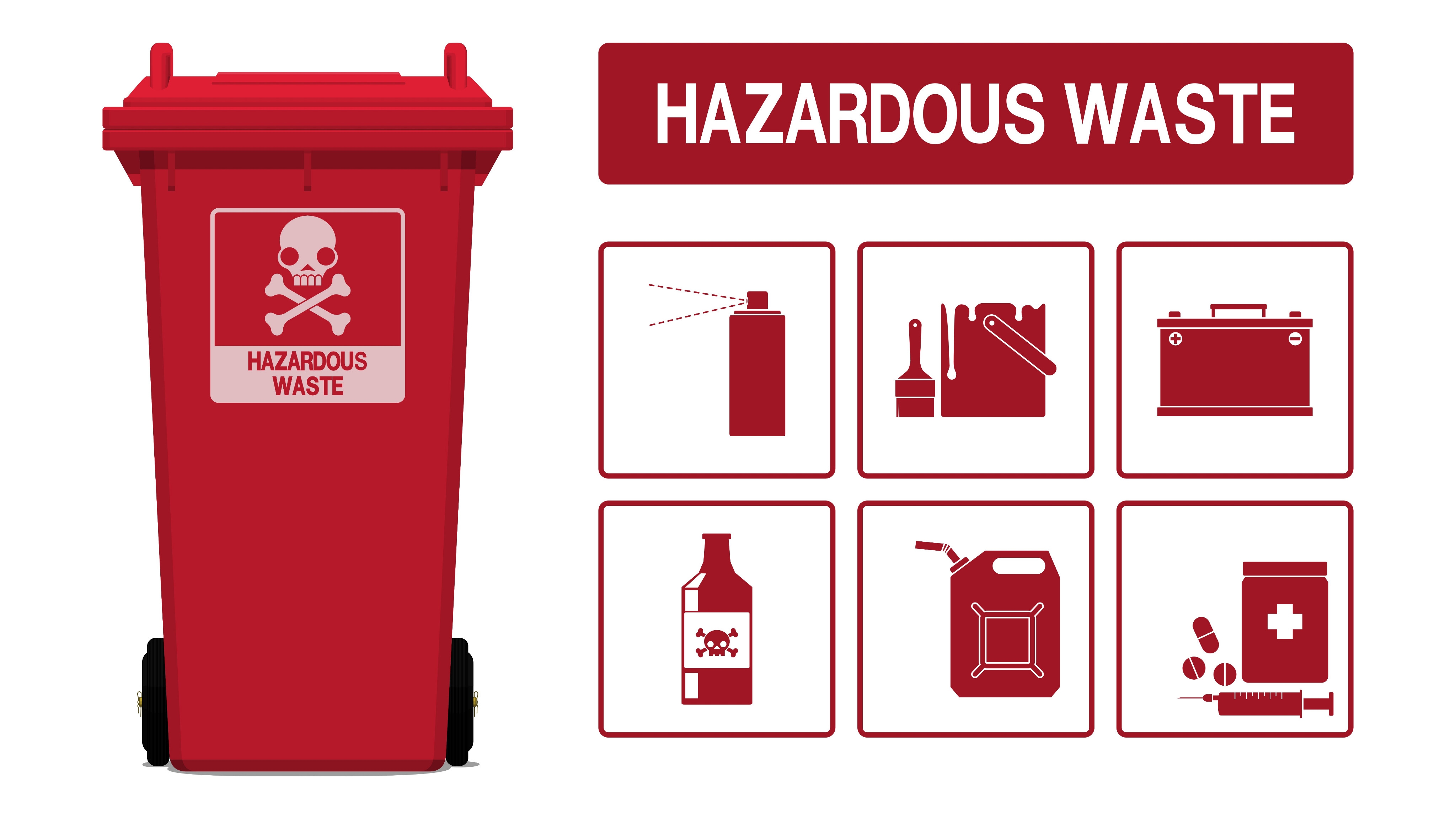Why can't I put hazardous materials in my trash?
March 28, 2025
Why can't I just put electronics and everything in the trash?
Hazardous materials like chemicals, batteries, and some electronics should not be thrown away. Basically, it’s anything in your house that is poisonous, corrosive, flammable, or explosive. And, like all hazardous waste, it should be kept out of the landfill and disposed of properly. As these items may eventually become a health hazard, as well as causing ecological harm.
Here's why:
Environmental Pollution: Hazardous materials leak toxins into soil, water, surfaces, and atmospheric air that can cause pollution for decades. For example, household cleaning agents, paints, and pesticides seep from landfill sites into groundwater contaminating the water we drink.
Illnesses: Some hazardous waste can also prove dangerous when touched or inhaled. For instance, batteries shed toxic metals such as mercury, lead, or cadmium as they go through the breakdown process and these can be seriously harmful to your health and cause burns to skin, eyes, respiratory and digestive tracks.
Fire Hazard: Certain materials may include flammable liquids, like aerosol cans. These flammable materials catch fire easily if near heat, flames or sparks. When ignited, flammable materials release harmful chemicals into the atmosphere that may resettle as acid rain. Items such as electronic waste can ignite or explode upon exposure to heat or pressure in a landfill or trash compacting devices; causing injury to anyone handling the garbage.
Damage: If dumped down drains, corrosive materials can corrode plumbing and contaminate water and marine environments.
Legal Requirements: Many places have laws that specify how hazardous waste must be disposed of to ensure that risks are minimized. Throwing such waste into trash can actually breach some local environmental regulations.
Instead, Hazardous materials need to be disposed of via special disposal programs such as local hazardous waste collection events or drop-off sites. This allows them to be safely disposed of without causing harm or damage to people or the environment. Cook St Roll-Offs & Recycling can help you dispose of your waste properly, give us a call!
Go Back Hazardous materials like chemicals, batteries, and some electronics should not be thrown away. Basically, it’s anything in your house that is poisonous, corrosive, flammable, or explosive. And, like all hazardous waste, it should be kept out of the landfill and disposed of properly. As these items may eventually become a health hazard, as well as causing ecological harm.
Here's why:
Environmental Pollution: Hazardous materials leak toxins into soil, water, surfaces, and atmospheric air that can cause pollution for decades. For example, household cleaning agents, paints, and pesticides seep from landfill sites into groundwater contaminating the water we drink.
Illnesses: Some hazardous waste can also prove dangerous when touched or inhaled. For instance, batteries shed toxic metals such as mercury, lead, or cadmium as they go through the breakdown process and these can be seriously harmful to your health and cause burns to skin, eyes, respiratory and digestive tracks.
Fire Hazard: Certain materials may include flammable liquids, like aerosol cans. These flammable materials catch fire easily if near heat, flames or sparks. When ignited, flammable materials release harmful chemicals into the atmosphere that may resettle as acid rain. Items such as electronic waste can ignite or explode upon exposure to heat or pressure in a landfill or trash compacting devices; causing injury to anyone handling the garbage.
Damage: If dumped down drains, corrosive materials can corrode plumbing and contaminate water and marine environments.
Legal Requirements: Many places have laws that specify how hazardous waste must be disposed of to ensure that risks are minimized. Throwing such waste into trash can actually breach some local environmental regulations.
Instead, Hazardous materials need to be disposed of via special disposal programs such as local hazardous waste collection events or drop-off sites. This allows them to be safely disposed of without causing harm or damage to people or the environment. Cook St Roll-Offs & Recycling can help you dispose of your waste properly, give us a call!
